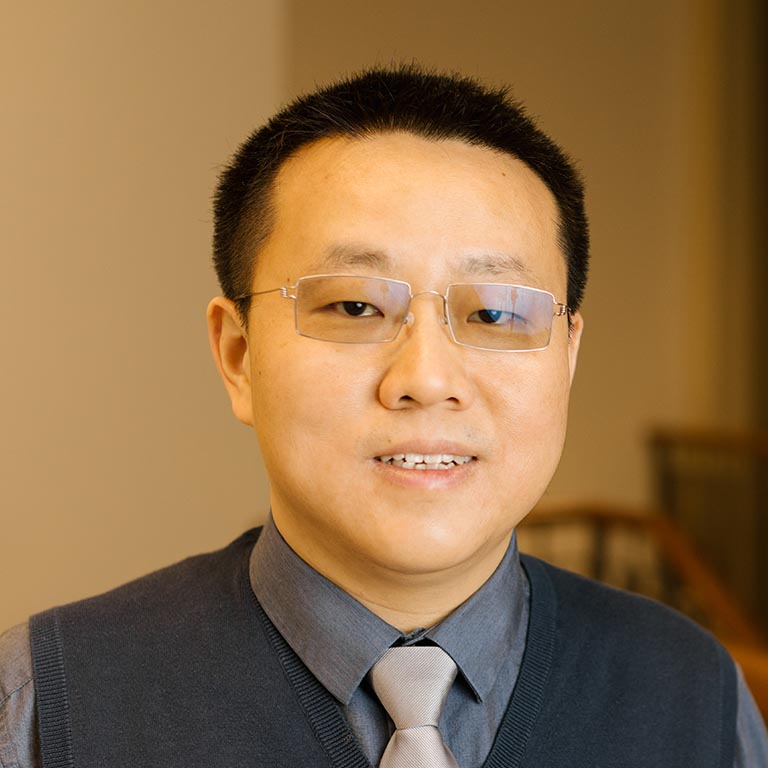- Ph.D., State University of New York at Stony Brook, 2008
- M.S., Tsinghua University, 2004
- B.S., Tsinghua University, 2001

Jinfeng Liao
Professor, Physics

Professor, Physics
nuclear physics (theoretical)
I am a theoretical nuclear physicist interested in studying the structures and properties of matter under extreme conditions --- the hottest, the densest, and/or the most strongly interacting matter that once filled the entire Universe that can now be explored by high energy collider experiments in the laboratory as well as by astrophysical observation of compact stars in the sky. These studies cover a wide range of topics in nuclear physics, particle physics, as well as many-body physics. Specifically I have recently been working on:
My research focuses on the theory of strong interaction (known as Quantum Chromo-Dynamics or QCD) and the phenomenology of high energy nuclear collisions. We study the structures and properties of matter under extreme conditions—the hottest, the densest, as well as the most strongly interacting matter. These studies cover a wide range of topics in nuclear physics, particle physics, as well as many-body physics.
Theoretical and experimental studies have suggested that the primordial state of matter in the baby Universe, reaching a temperature as high as about a trillion degrees, is a quark-gluon plasma (QGP). This exotic matter holds the key for understanding our cosmic origin and has now been re-created and measured in heavy ion collision experiments at the Relativistic Heavy Ion Collider (RHIC) in the USA as well as the Large Hadron Collider (LHC) in the Europe. We investigate the unusual properties of such extreme form of matter and explain highly novel quantum phenomena that emerge in this material. In doing so, we deepen our understanding of the basic theory of the nuclear force, namely the Quantum Chromodynamics (QCD).
Very recently we have found the collider-borne quark-gluon plasma to be a “subatomic swirl,” being the most vortical fluid and carrying a unprecedentedly strong magnetic field. This remarkable environment has allowed us to explore a number of particularly intriguing phenomena. One example is so-called Chiral Magnetic Effect (CME), a new type of quantum electricity. Another example is the idea of “fluid spintronics” in rotating matter. Both have spurred strong enthusiasm lately across various disciplines of physics.